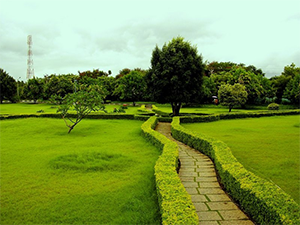 There are as many paths to enlightenment as there are individuals. Therefore, it stands to reason there are as many states of health as there are individuals on the Path. Practitioners of yoga run the gamut from glowing, radiant health like the yogis who live on amrit to the seekers who begin the path back to the Divine by the help of disease.
There are as many paths to enlightenment as there are individuals. Therefore, it stands to reason there are as many states of health as there are individuals on the Path. Practitioners of yoga run the gamut from glowing, radiant health like the yogis who live on amrit to the seekers who begin the path back to the Divine by the help of disease.
First, let us consider how to define health. Some people divide the individual into physical, emotional, mental and spiritual health. Yoga divides the individual into categories including chakras, koshas and doshas. Both are acceptable categorizations. In order to understand what health means, we need to consider where yoga is leading us. Yoga is taking us to the final destination of Union with the Divine, Moksha (Enlightenment). Health, therefore, can be considered from the viewpoint of where a sadhaka (spiritual aspirant) is in relation to the Goal. It is a yoga teacher’s dharma to do their best to help people understand their own health. The best way to be of service to a student is to be aware of the student’s health.
Wherever one is, whatever path of yoga is chosen, yoga sadhana (spiritual practice) means purification. When the pot that holds the milk is soiled with samskaras (previous impressions) then no matter how much milk is poured into the pot, it will always be soiled. We must clean the vessel. We are the vessel. Purification of the vessel is health. Bhakti, Karma, Jnana and Raja yoga are all designed to do just this, but purification does not necessarily mean perfect physical health. It is about purifying the whole jiva, not just the physical body.
We can see a full spectrum of what health means by looking at different branches of yoga. Bhakti and Karma yoga focus on spiritual health. What is the state of our soul? Sadhana here lies in the “invisible” health of the heart center. Hatha Yoga starts focusing on our physical health. It is body oriented and sadhana begins with purification of the layers of the body. Shatkarmas, asanas and pranayama lead the beginner on a path of intense purification of the inside and outside of the vehicle they will inhabit on the road to enlightenment. Both are enlightening viewpoints and yet they focus on the physicality of life from different perspectives.
Bhakti and Karma yoga are two sides of the same coin. Together they work as a team. The devotion of Bhakti drives the urge for seva, the divine put into action, Karma. Karma yoga is one of the best paths for cleaning the vessel. It empties the vessel of the ego by focusing the attention on helping another. By changing our focus from our own health onto helping the health of another, we purify ourselves. This is a yogic paradox. And, it is a most highly successful one. We purify our being by focusing on the selflessness as the center. Here also we note that health does not refer to our body, it refers to our heart center. Our body is the temple where the Divine resides. Purification means emptying ourselves of our ego in order to cleanse the temple, our body, for a place for the Divine to reside as love and compassion in our heart.
There is a story that is told about Indians. It says that if a man is starving, he will still share his last banana with his neighbor. Here health is the great spiritual essence of the heart, the pointer on the path to the Goal, seen in practice as Bhakti yoga. When practicing Bhakti a great pitfall may occur. The focus on the health of the soul can lead to a lack of focus on the health of the physical body. This may manifest as a lack of exercise and poor diet leading to disease and poor physical health with the justification that “the body is unimportant”. In Bhakti yoga some feel that the body is an object to be renounced and that to focus on the physical body clouds the true path and leads us to attachments. Therefore, forming attachments to our physical body creates more work for us, we will just have to get rid of these attachments in the future. So the question becomes, “Why form more attachments in the first place?” Being focused on the body is considered an obstacle to the Goal. We must let go of the attachment to the physical body and learn to focus inward on the true Self.
The great Jnani, Sri Ramana Maharshi exemplified this ideal. He allowed his body to decay with cancer and ultimately die even while his devotees begged him to heal himself. The Maha Sadguru Sri Mata Amritanandamayi allows her body to be riddled with diabetes when with just one thought she could heal herself. There is a legend of a Master who lived in the forest. One day a man was riding on a bus and this Master sat down next to him. The man noticed that the forest sadhu’s leg was infested with maggots. He happened to be a doctor and told the man he would like to treat him and heal his leg for him. The Master smiled and said, “No thank you, they too are God’s creatures and need something to eat.”
Until we are capable of Self-Realization, we as ignorant beings cannot make sense of these examples. Health means we neglect the body? Only our soul is important? We must remember that while we are living in prātibhāsika satta (relative reality). Our body is an important object on the path to the Goal. We need it in order to continue our journey and it is wise to take care of it to the best of our abilities until we have reached pāramārthika satta (absolute reality), the point when we are knowledgeable enough to let it go.
Let’s look at the opposite side of the spectrum. The path of Hatha Yoga is complex, detailed and involved. How do we use the body and at the same time accept that we are not the body? For this reason Hatha Yoga is considered one of the more difficult paths to follow, similar to the path of Jnana where one uses the mind to overcome the mind. Sage Patanjali states in his Yoga Sutras, when speaking of the yamas and niyamas, that illness is an obstacle on the path. If we are experiencing intense suffering and pain, this will cause our focus to be on our pain and not on the realization of the True Self. Where good physical health is concerned, Hatha Yoga is right on target. The purification process starts immediately with the elimination of toxins from the body with the asana and pranayama practice. We must treat the body as a temple, the vessel where God resides. Hatha Yoga considers that we must explore the vessel, which holds the nectar of Divinity. We must purify this vessel through extensive focus on the body and mind. Purifying as we go, clearing out vasanas and blockages, we then learn to let go of the body and mind to create emptiness for the True Self to shine forth. With this process, we gain radiant health.
The obvious pitfall in the practice of Hatha Yoga is that health can take on a purely physical meaning. Yoga is looked upon as an exercise, practiced in the gym or studio in the west. Practitioners are unaware or uninterested in the True Goal of Enlightenment. “I do yoga for my health.” “I do yoga to look and feel good.” These statements are often heard in yoga studios all over the world. Unfortunately, this means the practice focuses on the body and performing asanas becomes merely an exercise. Luckily, this notion is gradually expanding. Most practitioners outside of India choose the path of Hatha Yoga because it is widely available and accessible.
If the desire to be pain free and to obtain glowing health is the reason a person becomes involved in yoga, then the potential is there for the soul to delve deeper. Wise teachers of yoga encourage students in their practice regardless of their motivations, be they obtaining glowing health or spiritual enlightenment. A teacher can bring in the deeper meaning of the practice. With a good teacher, the original choice of Hatha Yoga often acts as an opening into the other branches of yoga. Eventually, some students may begin to acknowledge physical health as a stepping-stone to discovering the true meaning of yoga.
Author: Vandana Easterbrooks

0 Comments